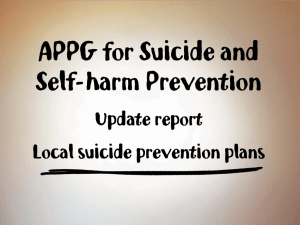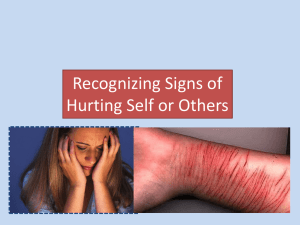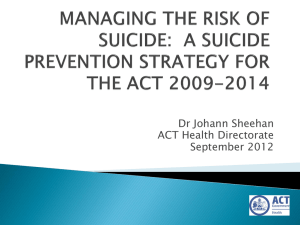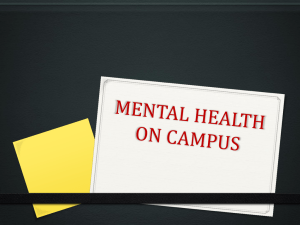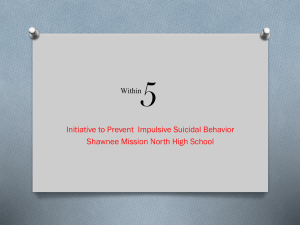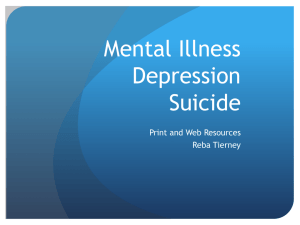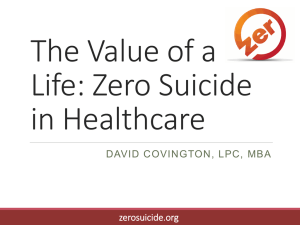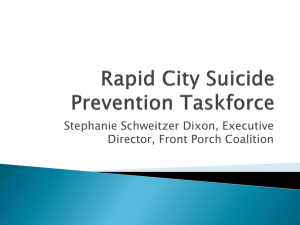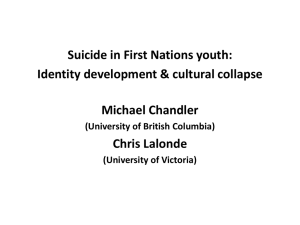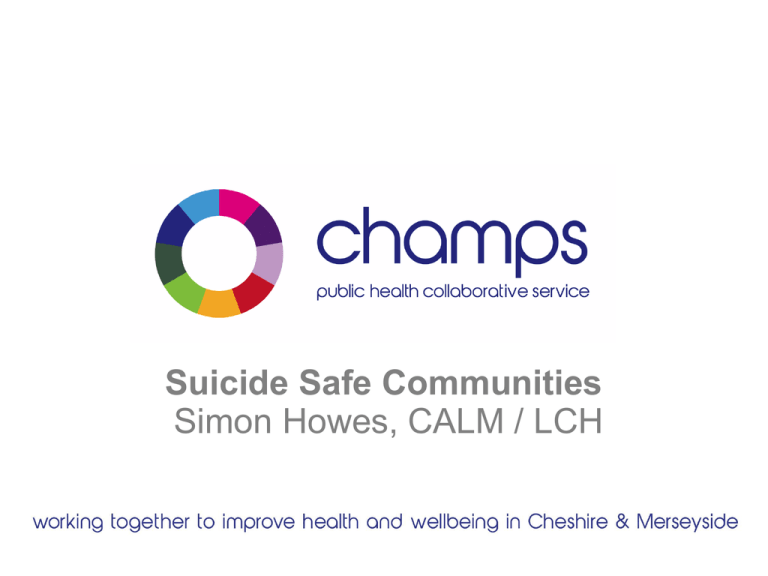
Suicide Safe Communities
Simon Howes, CALM / LCH
3-pronged approach
Prevention
Suicide Safer
Communities
Intervention
Perfect
Depression Care
Postvention
Suicide
Liaison
Service
Mental Health Services (2009 data)
In relation to the national data available for England and
Wales, in the Mersey Care NHS Trust catchment area,
only 11% of suicides occur in people who are in contact
with services, compared to the national data of 28%*
i.e. 89% of those who died by suicide in the Mersey Care
catchment area were NOT in touch with secondary MH
services within one year prior to death, highlighting the
need for a Public Health approach to Suicide Prevention
* The National Confidential Inquiry into Suicide and Homicide by
People with Mental Illness Annual Report July 2014
11%
In touch with secondary
MH services within one
year prior to death
NOT in touch with
secondary MH services
within one year prior to
death
89%
Suicide Safer Communities
A concept developed by The Canadian Association for Suicide Prevention &
Living Works
A “Suicide Safer Community” is one in which people, organizations and
stakeholders have come together to:
• Prevent suicides
• Promote public education and awareness
• Provide support to people bereaved by suicide and promote healing and
recovery
• Promote the mental health and well being of all its citizens
Suicide Safer Communities
5 Pillars:
1) Leadership
A Leadership Committee comprised of community organizations and individuals
exists to assume a leadership position focused on suicide prevention,
intervention and postvention.
2) Action Plan
An action plan based on systemic processes and evidence based methods for
promoting suicide prevention and building capacity has been
developed. Events are organized in support of World Suicide Prevention Day
every September 10th.
Suicide Safer Communities
3) Gatekeeper Training
Investments have been made in training community gatekeepers. There is
evidence that an appropriate number of suicide prevention gatekeepers have
been trained in relationship to the population size or a plan for gatekeeper
training has been included in the community suicide prevention action plan.
4) Suicide Bereavement
Resources and supports are in place and available to support people bereaved
by a suicide death.
5) Mental Health Promotion
A thoughtful and comprehensive plan to inform the community about mental
health and wellness has been established.
Gatekeeper training
CM LA Population Census
2011 Data
Recommended number of
trained gatekeepers (2:10k pop)
(if 30 people per session)
Cheshire East
370,127
74
3
Cheshire West and Chester
329,608
66
3
Halton
125,746
25
1
Knowsley
145,893
29
1
Liverpool
466,415
93
4
St Helens
175,308
35
2
Sefton
273,790
55
2
Warrington
202,228
40
2
Wirral
319,783
64
3
Total
2,408,898
482
21
LA
No of sessions
The S RAP and its value
The Suicide Reduction Action Plan is organised by the 6 objectives
outlined within the Preventing Suicide in England strategy. In
addition, actions related to wellbeing promotion are also included.
The level of intervention (local/regional) and responsible lead are
outlined, along with a red, amber or green (RAG) status.
The action plan should be reviewed annually by the local authority
public health (LA-PH) suicide lead and the Cheshire and
Merseyside Regional group.
An annual report based upon progress towards meeting these
actions should also be produced.
Suicide-Safer Community - A checklist
• Establish a Suicide-Safer Community committee
• Establish the population size of your community
• Identify organisations representing your community
• Create and agree an action plan or strategy with identified priorities
• Support and commission accessible suicide intervention services
• Support and commission accessible suicide bereavement support
• Support and commission promotion of mental health and wellness activities
• Support and commission proactive suicide prevention activities
• Establish a pool of formally trained gatekeepers
• Participate in World Suicide Prevention Day
Challenges
① How do we ensure these actions are done in depth,
both horizontally across communities and vertically
across organisations?
② How do we close gaps and reduce the unequal risks?
Suicide Safe Communities
Simon Howes, CALM / LCH


